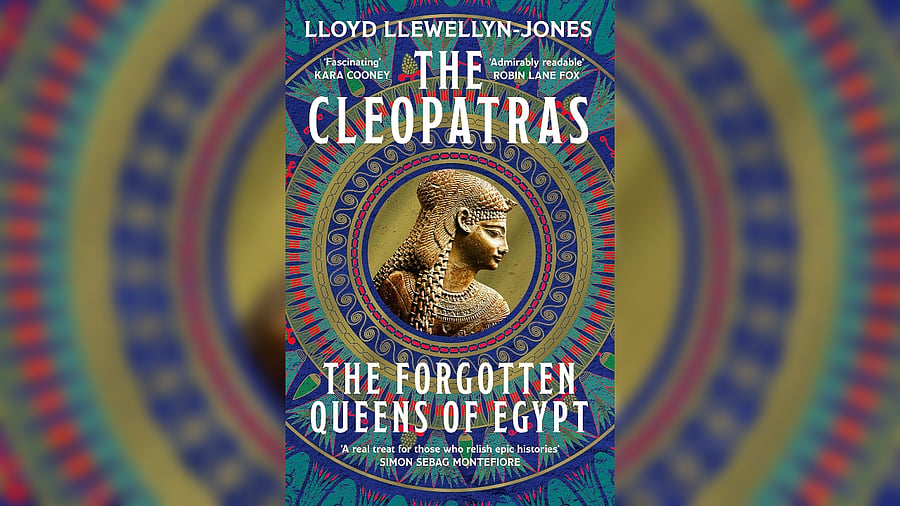
The Cleopatras.
Credit: Special arrangement
Closely related as mothers, daughters, sisters, half-sisters and nieces, known only by the name of Cleopatra, they ruled Egypt for more than a century and a half (192 BCE– 30 BCE). When taken as a collective, the generation of Cleopatras set a new model for female power in antiquity. Together, they dominated the political world of men, in vigour, finesse, ambition, rigour, vision, and ability. All seven were direct blood relatives, and all of them were queens of Egypt. Composed of two Greek words, kleos meaning glory/fame, and pater meaning father/homeland, Cleopatra was a big name to live up to.
In his book Cleopatras: The Forgotten Queens Of Egypt, famed historian Lloyd Llewellyn Jones tells the dramatic story of these seven incomparable women, vividly tracing the kingdom’s final centuries before it fell to Rome. The Cleopatras were descendants of Ptolemy, the general who conquered Egypt alongside Alexander the Great. They were closely related, and each wielded absolute power in overshadowing their husbands or sons. Without fail they all proved to be shrewd and capable leaders. The Cleopatras ruled through the canny deployment of arcane rituals, opulent spectacles, and unparalleled wealth. They negotiated political turmoil and court intrigues, led armies into battlefields, commanded fleets of ships, and ruthlessly dispatched their dynastic rivals.
Historically, women have had to pay a heavy price to remain on top. In this context, the name Cleopatra was already a formidable one. Cleopatras were the first ones to have discovered a genuine new framework for aligning with active political power. Their collective story is neglected and forgotten but a book like this one showcases how they adjusted to the male-dominated institution. Taken together, theirs is an impeccable narrative on women’s power in a stiflingly patriarchal world. Llewellyn-Jones must be credited for revealing a story of ruthlessness, but also of lifelong determination.
All the Cleopatras craved power and eventually wielded power. Some of the Cleopatras shared the same royal husband, whereas others plotted to overthrow their husbands. Each of the Cleopatras had an interesting story, about surviving marriage, betrayal, murder, violence and loss. The emotional turmoil each of them went through remains more of a speculation while sex as the only lure for power remains hard to comprehend.
In reality, the life and times of each of the Cleopatras was much more complicated. They were the power brokers of the Ptolemaic dynasty, no doubt. Through several successive generations, the Cleopatras underplayed their traditional roles as mothers and spouses. While each Cleopatra may have had a different take on the subject, the compulsion to sustain gender dominance was perhaps their singular driving force; for only by doing so, did the Cleopatras gain time for the Romans’ takeover.
At the peak of the Cleopatras’ rule, the last Cleopatra claimed the lofty title, ‘Queen of Kings’. Cleopatra VII demonstrated, the author believes, that women were born to rule over men. In short, this is a fascinating book for those who want to go beyond the myth of Cleopatra. It offers fresh insights into the real story of the Cleopatras and the tragic death of the last queen of Egypt.